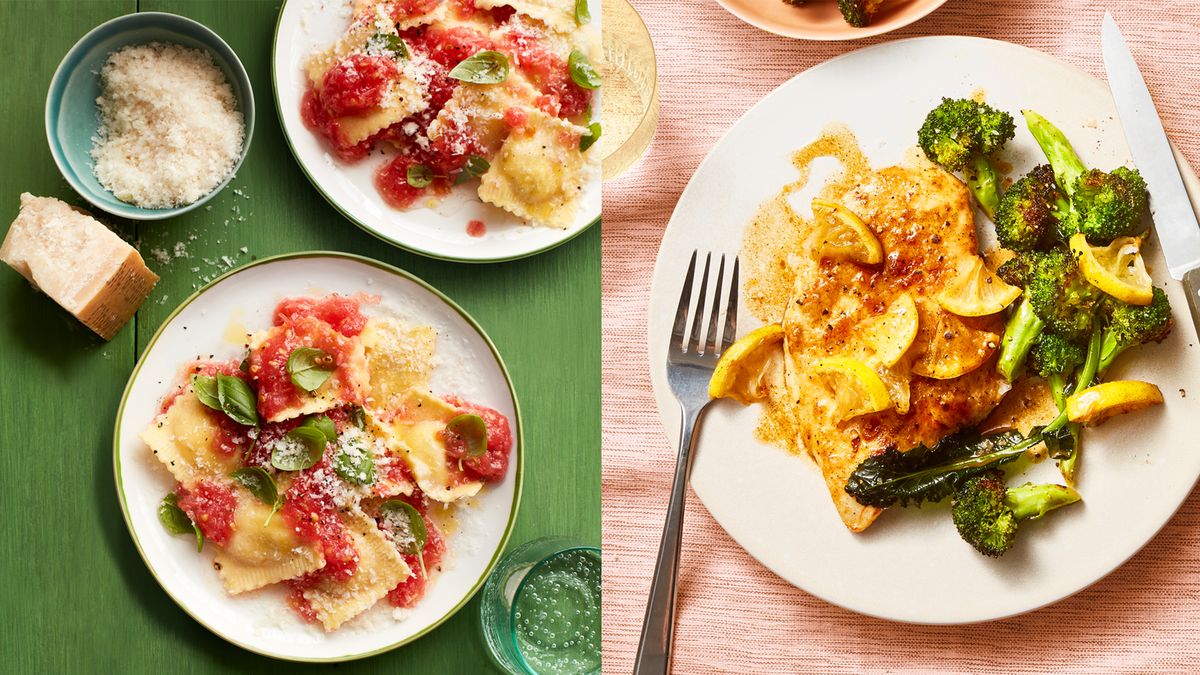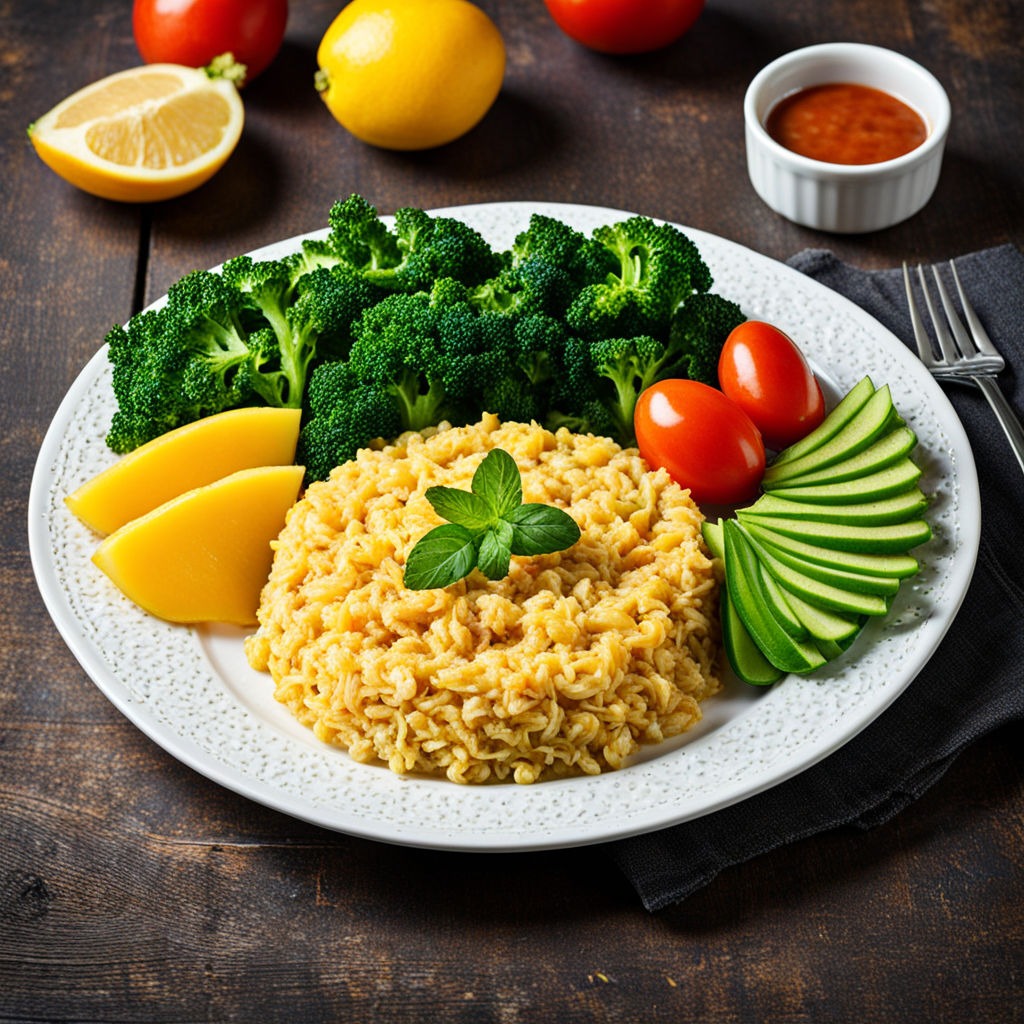Introduction

In today’s health-conscious world, the focus on maintaining a balanced diet has never been more critical. One effective approach to achieving a healthier lifestyle is through the incorporation of low-calorie meals. But what exactly are low-calorie meals, and why are they so important?
Definition of Low-Calorie Meals
Low-calorie meals are dishes specifically designed to contain a reduced amount of calories while still providing essential nutrients and satisfying flavors. Typically, a low-calorie meal is defined as containing fewer than 500 calories per serving, though this can vary depending on individual dietary needs and goals. These meals prioritize whole foods such as fruits, vegetables, lean proteins, and whole grains, minimizing the use of high-calorie, processed ingredients.
Importance of Incorporating Low-Calorie Meals into Daily Diet

Integrating low-calorie meals into your daily diet can have profound effects on overall health and well-being. The primary advantage is weight management, which is essential for preventing obesity and related health conditions such as diabetes and heart disease. By consuming fewer calories than you burn, you create a caloric deficit, leading to weight loss over time. Additionally, low-calorie meals often emphasize nutrient-dense foods, which provide vitamins, minerals, and fiber that support bodily functions and promote a sense of fullness.
Furthermore, consistently choosing low-calorie meals can enhance energy levels and mental clarity. When your body isn’t overloaded with excessive calories, it can operate more efficiently, leading to increased productivity and a better mood throughout the day. Learn more about the importance of low-calorie diets.
Overview of the Benefits of Low-Calorie Meals
The benefits of incorporating low-calorie meals into your diet extend beyond weight management. Here are a few key advantages:
- Improved Health: Reducing calorie intake can lower the risk of chronic diseases. A diet rich in vegetables, fruits, and lean proteins supports cardiovascular health and reduces the likelihood of conditions such as hypertension and high cholesterol.
- Increased Energy: Low-calorie meals can help stabilize blood sugar levels, preventing the energy crashes that often follow high-calorie, sugary meals. This can lead to sustained energy throughout the day, improving both physical and cognitive performance.
- Better Digestion: High-fiber, low-calorie foods promote healthy digestion and regular bowel movements, reducing the risk of digestive issues such as constipation and bloating.
By focusing on low-calorie meals, you can enjoy delicious, satisfying foods that contribute to a healthier, more energetic lifestyle. For more information, visit Medical News Today.
Understanding Calories
To make informed dietary choices, it’s essential to understand what calories are and their role in the body. Knowing how many calories you need daily and how to calculate your specific requirements can help you maintain a balanced diet and achieve your health goals.
What are Calories and Their Role in the Body
Calories are units of energy that measure the amount of energy food provides. When you eat, your body converts calories from food into energy, which is used to fuel everything from basic functions like breathing and digestion to physical activities like walking and running. The number of calories in food determines how much potential energy it contains.
In essence, calories are the fuel that keeps your body running. Consuming the right amount of calories helps maintain body weight, supports bodily functions, and provides energy for daily activities. Learn more about calories.
Daily Recommended Calorie Intake for Different Age Groups and Lifestyles
The number of calories you need each day depends on various factors, including age, gender, activity level, and overall health. Here is a general guideline for daily calorie intake based on different age groups and activity levels:
- Children (2-8 years): 1,000-1,400 calories
- Girls (9-18 years): 1,400-2,400 calories
- Boys (9-18 years): 1,600-3,200 calories
- Women (19-50 years): 1,800-2,400 calories
- Men (19-50 years): 2,200-3,000 calories
- Older Adults (51+ years): 1,600-2,200 calories (women), 2,000-2,800 calories (men)
Activity levels also play a significant role in determining calorie needs:
- Sedentary: Little or no physical activity
- Moderately active: Equivalent to walking 1.5 to 3 miles daily at a pace of 3 to 4 miles per hour
- Active: Equivalent to walking more than 3 miles daily at the same pace
For more detailed guidelines, the U.S. Department of Health and Human Services provides comprehensive recommendations on daily calorie needs.
How to Calculate Your Calorie Needs
To calculate your specific calorie needs, you can use the Basal Metabolic Rate (BMR) and Total Daily Energy Expenditure (TDEE) methods. BMR estimates the number of calories your body needs to maintain basic physiological functions at rest, while TDEE accounts for physical activity.
Here’s how you can calculate your BMR using the Mifflin-St Jeor Equation:
- For men: BMR = 10 × weight (kg) + 6.25 × height (cm) – 5 × age (years) + 5
- For women: BMR = 10 × weight (kg) + 6.25 × height (cm) – 5 × age (years) – 161
After calculating your BMR, multiply it by an activity factor to get your TDEE:
- Sedentary (little or no exercise): BMR × 1.2
- Lightly active (light exercise/sports 1-3 days/week): BMR × 1.375
- Moderately active (moderate exercise/sports 3-5 days/week): BMR × 1.55
- Very active (hard exercise/sports 6-7 days a week): BMR × 1.725
- Super active (very hard exercise/physical job & exercise): BMR × 1.9
For more accurate calculations, you can use online tools like the National Institutes of Health Body Weight Planner or consult with a healthcare professional.
Benefits of Low-Calorie Meals

Adopting a diet rich in low-calorie meals offers numerous health benefits, ranging from weight management to improved energy levels. By focusing on nutrient-dense, lower-calorie foods, you can significantly enhance your overall health and well-being.
Weight Management and Loss
One of the most prominent benefits of low-calorie meals is their role in weight management and loss. Consuming fewer calories than you burn creates a caloric deficit, which leads to weight loss over time. Low-calorie meals often emphasize portion control and the inclusion of high-fiber, nutrient-dense foods that help you feel full longer. This can reduce overeating and make it easier to maintain a healthy weight.
Reduced Risk of Chronic Diseases
Eating low-calorie meals can also lower the risk of developing chronic diseases such as diabetes, heart disease, and certain cancers. High-calorie diets, especially those high in sugar and unhealthy fats, are linked to obesity and inflammation, which are risk factors for these conditions. Low-calorie diets, on the other hand, tend to be rich in antioxidants, vitamins, and minerals that support overall health and reduce inflammation. The American Heart Association provides valuable insights into how calorie management can prevent chronic diseases.
Enhanced Energy Levels and Mental Clarity
Another significant benefit of low-calorie meals is the enhancement of energy levels and mental clarity. High-calorie, sugary foods can lead to energy spikes and crashes, making you feel sluggish and unfocused. In contrast, low-calorie meals that include whole grains, lean proteins, and healthy fats provide sustained energy throughout the day. This steady supply of energy can improve physical performance and mental focus, helping you stay productive and alert.
Better Digestion and Gut Health
Low-calorie meals often include high-fiber foods such as fruits, vegetables, and whole grains, which promote better digestion and gut health. Fiber adds bulk to the stool, which helps maintain regular bowel movements and prevent constipation. Additionally, a fiber-rich diet supports the growth of beneficial gut bacteria, which play a crucial role in digestion, nutrient absorption, and immune function. Improved gut health is associated with a lower risk of digestive disorders and enhanced overall well-being.
Key Ingredients for Low-Calorie Meals
Crafting low-calorie meals that are both nutritious and satisfying is easier when you focus on key ingredients. These ingredients provide essential nutrients while keeping calorie counts low, making them perfect for a healthy diet.
Fruits and Vegetables: High in Nutrients, Low in Calories
Fruits and vegetables are the cornerstone of any low-calorie meal plan. They are naturally low in calories and high in vitamins, minerals, and fiber, which are crucial for overall health. Vegetables like leafy greens, bell peppers, broccoli, and carrots add volume and nutrients to meals without adding many calories. Fruits such as berries, apples, and citrus fruits provide natural sweetness and essential nutrients.
- Example: A large salad made with mixed greens, cherry tomatoes, cucumbers, and a squeeze of lemon juice.
Lean Proteins: Chicken, Turkey, Fish, Tofu, and Legumes
Lean proteins are essential for muscle repair, growth, and overall body function. They are lower in fat and calories compared to fatty cuts of meat, making them ideal for a low-calorie diet. Options such as chicken breast, turkey, fish (like salmon and cod), tofu, and legumes (such as beans and lentils) provide high-quality protein without the extra calories.
- Example: Grilled chicken breast served with a side of steamed vegetables and quinoa.
Learn more about healthy protein sources from the Harvard T.H. Chan School of Public Health.
Whole Grains: Quinoa, Brown Rice, Oats
Whole grains are packed with fiber, vitamins, and minerals. Unlike refined grains, whole grains retain their nutrient-rich bran and germ, which help in maintaining fullness and providing sustained energy. Quinoa, brown rice, and oats are excellent choices that can be incorporated into various meals.
- Example: A bowl of oatmeal topped with fresh berries and a sprinkle of nuts for breakfast.
Healthy Fats: Avocado, Nuts, Seeds, and Olive Oil
Incorporating healthy fats into your diet is important for heart health, brain function, and overall well-being. Healthy fats found in avocados, nuts (like almonds and walnuts), seeds (such as chia and flaxseeds), and olive oil provide essential fatty acids without the high calories of saturated and trans fats. These fats can help you feel satiated and reduce overall calorie intake by curbing hunger.
- Example: A slice of whole-grain toast topped with mashed avocado and a sprinkle of chia seeds.
Cooking Techniques for Low-Calorie Meals

Choosing the right cooking techniques can significantly impact the calorie content of your meals. By employing healthier methods, you can enjoy delicious dishes without the extra calories.
Grilling and Baking vs. Frying
Grilling and baking are excellent cooking methods for reducing calorie intake. These techniques allow the natural flavors of the food to shine without the need for excess oil or butter.
- Grilling: This method uses direct heat to cook food quickly, often adding a desirable charred flavor. Grilling meats, vegetables, and even fruits can reduce the need for added fats.
- Example: Grilled chicken breast with a side of grilled vegetables.
- Baking: Baking uses indirect heat and is ideal for cooking a variety of dishes with minimal added fats. It’s perfect for preparing everything from lean proteins to vegetables.
- Example: Baked salmon with a sprinkle of herbs and lemon slices.
In contrast, frying involves submerging food in hot oil, significantly increasing calorie content. Avoid frying to keep your meals lighter and healthier. For more tips on healthy cooking methods, check out EatingWell’s guide to healthy cooking.
Steaming and Poaching
Steaming and poaching are gentle cooking methods that preserve the nutrients in food without adding extra calories.
- Steaming: This technique uses steam from boiling water to cook food. It’s ideal for vegetables, fish, and poultry, keeping them moist and flavorful without added fat.
- Example: Steamed broccoli and carrots served with a squeeze of lemon juice.
- Poaching: Poaching involves simmering food in water or broth. It’s a great way to cook delicate foods like eggs, fish, and chicken while maintaining their texture and flavor.
- Example: Poached salmon in a broth seasoned with herbs and a touch of white wine.
Learn more about these methods on BBC Good Food’s steaming and poaching guide.
Using Non-Stick Cookware and Minimal Oil
Non-stick cookware allows you to cook with little to no added fat, preventing food from sticking and burning. This can help reduce the overall calorie content of your meals.
- Non-stick pans: These are perfect for cooking eggs, pancakes, and stir-fries with minimal oil.
- Example: A veggie stir-fry using a non-stick pan and just a teaspoon of olive oil.
Using sprays or a brush to apply a thin layer of oil can also help keep calorie counts low.
Flavoring with Herbs and Spices Instead of High-Calorie Sauces
Enhancing the flavor of your meals with herbs and spices can add depth without the extra calories that come from heavy sauces and dressings.
- Herbs and spices: Fresh and dried herbs like basil, cilantro, rosemary, and thyme, as well as spices like cumin, paprika, and turmeric, can add vibrant flavors.
- Example: Seasoning roasted vegetables with a mix of garlic, paprika, and thyme.
- Citrus and vinegars: Lemon juice, lime juice, and various vinegars (like balsamic and apple cider) can provide a tangy kick without added calories.
- Example: A splash of balsamic vinegar over a fresh tomato salad.
Sample Low-Calorie Meal Plans
Creating a variety of low-calorie meals ensures you get all the nutrients you need while keeping your diet interesting and satisfying. Here are some meal ideas for breakfast, lunch, and dinner that incorporate nutrient-dense ingredients and diverse flavors.
Breakfast
Smoothie Bowl with Fresh Fruits and Chia Seeds
- Ingredients: Fresh fruits (such as berries, banana, mango), unsweetened almond milk, spinach, chia seeds.
- Preparation: Blend the fruits and spinach with almond milk until smooth. Pour into a bowl and top with chia seeds and additional sliced fruits.
- Nutritional Benefits: High in vitamins, antioxidants, and fiber while being low in calories.
Oatmeal Topped with Berries and a Drizzle of Honey
- Ingredients: Rolled oats, water or low-fat milk, mixed berries (such as blueberries, raspberries, strawberries), a drizzle of honey.
- Preparation: Cook oats according to package instructions. Top with mixed berries and a light drizzle of honey.
- Nutritional Benefits: Provides complex carbohydrates for sustained energy and is rich in fiber and antioxidants.
Lunch
Quinoa Salad with Mixed Vegetables and a Lemon Vinaigrette
- Ingredients: Cooked quinoa, mixed vegetables (such as bell peppers, cucumbers, cherry tomatoes, red onion), lemon juice, olive oil, salt, and pepper.
- Preparation: Combine cooked quinoa with chopped mixed vegetables. Whisk together lemon juice, olive oil, salt, and pepper to make the vinaigrette and toss with the salad.
- Nutritional Benefits: High in protein and fiber, low in calories, and packed with vitamins and minerals.
Grilled Chicken Wrap with Lots of Veggies and a Light Yogurt Dressing
- Ingredients: Grilled chicken breast slices, whole-grain wrap, mixed greens, shredded carrots, sliced bell peppers, light yogurt dressing (made with Greek yogurt, lemon juice, garlic).
- Preparation: Fill the whole-grain wrap with grilled chicken, mixed greens, carrots, and bell peppers. Drizzle with yogurt dressing and roll up.
- Nutritional Benefits: High in protein, fiber, and vitamins while being low in fat and calories.
Dinner
Baked Salmon with Steamed Broccoli and a Side of Brown Rice
- Ingredients: Salmon fillet, broccoli florets, brown rice, olive oil, lemon slices, garlic, salt, and pepper.
- Preparation: Bake the salmon fillet with a drizzle of olive oil, lemon slices, and minced garlic at 375°F for 15-20 minutes. Steam the broccoli until tender and serve with cooked brown rice.
- Nutritional Benefits: High in omega-3 fatty acids, protein, fiber, and essential nutrients while being low in calories.
Veggie Stir-Fry with Tofu and a Low-Sodium Soy Sauce
- Ingredients: Firm tofu (cubed), mixed vegetables (such as bell peppers, broccoli, snap peas, carrots), low-sodium soy sauce, garlic, ginger, sesame oil.
- Preparation: In a skillet, heat sesame oil and sauté garlic and ginger. Add tofu and vegetables, stir-frying until vegetables are tender. Add low-sodium soy sauce and cook for another minute.
- Nutritional Benefits: Rich in protein, fiber, and various vitamins and minerals, and low in calories and sodium.
Additional Options
Pork and Shrimp Noodle Stir-Fry
- Ingredients: Lean pork slices, shrimp, whole-grain noodles, mixed vegetables (such as bell peppers, snap peas, carrots), low-sodium soy sauce, garlic, ginger, sesame oil.
- Preparation: In a skillet, heat sesame oil and sauté garlic and ginger. Add pork slices and cook until browned. Add shrimp and vegetables, cooking until shrimp are pink and vegetables are tender. Toss in cooked noodles and low-sodium soy sauce.
- Nutritional Benefits: Provides a balanced source of protein, fiber, and essential nutrients while keeping calorie intake in check.
Beef and Green Vegetable Skillet
- Ingredients: Lean beef strips, green vegetables (such as broccoli, spinach, zucchini), garlic, olive oil, low-sodium beef broth.
- Preparation: In a skillet, heat olive oil and sauté garlic. Add beef strips and cook until browned. Add green vegetables and low-sodium beef broth, cooking until vegetables are tender and beef is cooked through.
- Nutritional Benefits: High in protein and vitamins, low in calories, and provides a satisfying and nutritious meal.
